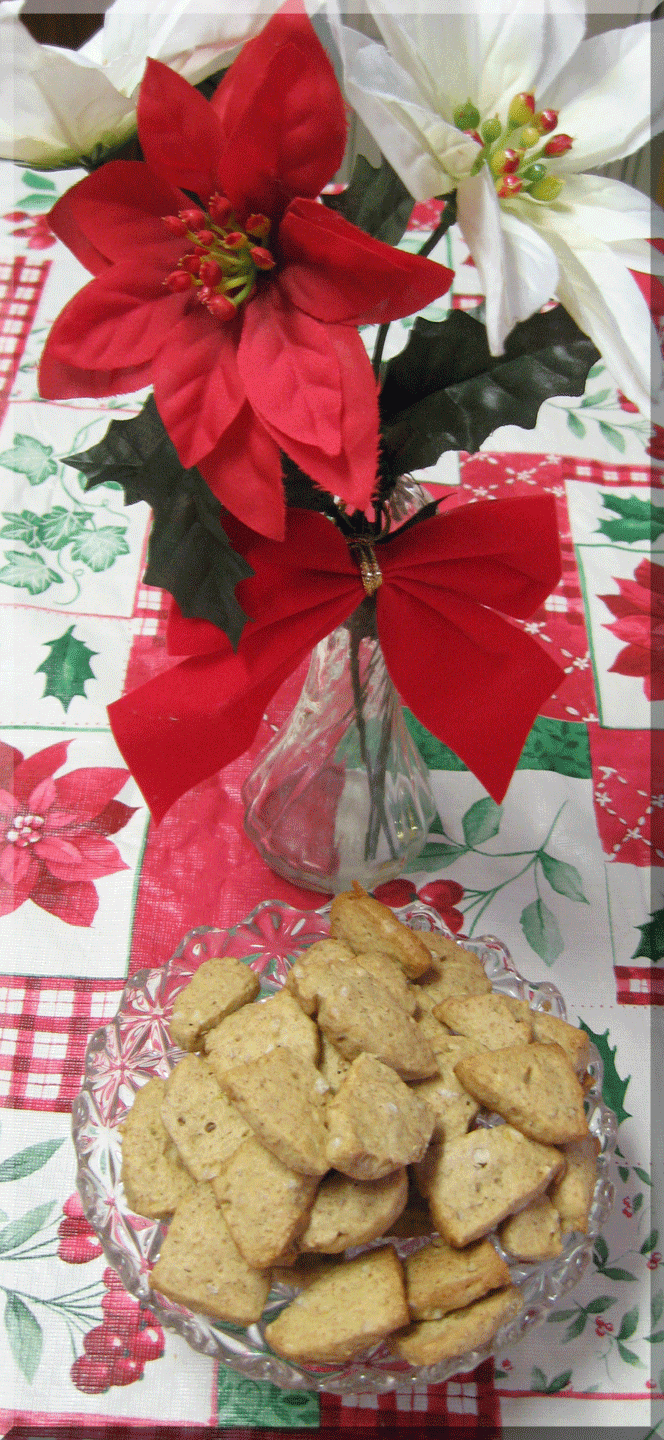 As a child, Christmas Eve was filled with expectation. And the expectation heightened when we gathered around the Christmas tree in the living room. The potato soup awaited our Daddy who finished delivering packages and parcels to make other families happy, no matter how late it was. My two brothers and I had our baths and dressed in our sleepers (pajamas).
As a child, Christmas Eve was filled with expectation. And the expectation heightened when we gathered around the Christmas tree in the living room. The potato soup awaited our Daddy who finished delivering packages and parcels to make other families happy, no matter how late it was. My two brothers and I had our baths and dressed in our sleepers (pajamas).
When the moment arrived, Dad came home and finished supper. He cleaned the grime of the day and joined us. It was an expectation that grew into a tradition and a memory through the years. Dad read Luke 2, the first Christmas story and we prayed – each one of us. Then we sang “Away in a Manger” and “Silent Night“.
I didn’t know then, but Dad’s post office job kept Mom from celebrating Christmas with her family. In the expectation of the gifts, I didn’t see Mom’s tears, but I know now, that it was more than the Christmas tree lights that reflected in her eyes.
When she withdrew the package that Grandma Suderman had mailed us, I could feel her expectation, and love. She opened the box slowly. The first thing she drew out of the box was a gallon jar of peppernuts. I can imagine now, how she ate each tiny crisp morsel of the pepper nuts (
Pfeffernussen
) how the memories of home and Christmas celebrations past crowded her mind. The memories include the Christmas tree’s pungent odor that mingled with the aroma of a clean house, potato soup and peppernuts.More than seventy years later, Christmas peppernuts nudges memories of Christmas – not the presents – they are forgotten. When I make peppernuts now, nostalgia brings pictures of home on Christmas Eve.
Recently my brother Gene asked if I knew the history of peppernuts. I drew the book, Mennonite Foods & Folkways from South Russia by Norma Jost Voth from my shelf and shared part of the history. As I looked in this book I saw a story that intrigued me. Plus recipe after recipe of different kinds from the very earliest.
Twelve-year-old Tina Epp, sleeping on a cot in the corner of a large family kitchen, dug her head deeper into the soft featherbed. It was Christmas Eve, 1881. The house had long been still, except for the tiny fire that flickered in the brick oven. Tina could not sleep, this was the most difficult Christmas Eve, for things were different. Mother said there would be NO presents, or enough food to make their usual Papanat (peppernuts), or their lovely peppermint Christmas cookies. Finally Tina drifted off to sleep, only to awaken at midnight. Who was in the kitchen at midnight? Mama? Tina pretended to be asleep. Before long the sweet, familiar aroma of syrup peppernuts baking filled the room. Tina peeks from one eye. Papa was ever there. Her Mama whispered, “Go, put one in her mouth.” Tears of quiet joy trickled onto the featherbed as she tasted the peppernuts. Mama had found enough flour, eggs and syrup to make peppernuts. It would be Christmas after all. Tina always remembered her dear mama baking peppernuts at midnight…..as told by Frieda Lehn Neufeld in Norma Jost Voth’s book – Mennonite Foods & Folkways from South Russia!
Is there just one recipe? Where did the recipe come from? How long has this delightful Christmas cookie been handed down?
Again, I turn to the book above – Old recipes frequently called for black pepper. Used in cautious amounts – pepper blends quietly and enhances the other spices. In medieval times, ginger and pepper were used together. The basic ingredients – honey, eggs and flour – were made for centuries. When trade routes opened across Europe in the 14th century -spices from distant lands came to Germany and France and created a baking revolution. During the Middle Ages, a pound of ginger would buy a sheep. Pepper was the most coveted of all spices. In medieval France, a pound of pepper could buy a serf his freedom. Pfeffer means spices Thus came the names of Pfefferkuchen (pepper cookies) and Pfeffernusse. Papanat (pay-pah-nayt) was the low dutch word, and the word I learned as a child.
There is more history in this book, that declares that Hillsboro, is the Peppernut Capital of Kansas. 267,000 are prepared each day. Four kinds were made – raisin, nut, gumdrop and anise. As a child, Mom had the three of us roll ‘snakes’ of dough, cut with a knife in small pieces, and then place in a pan for baking.
There are approximately 30 recipes for peppernuts from Swedish, Danish connection, Dutch, Danzig, Friedrichstadter (made for Duke Frederick), German and Russian types of Peppernuts
Although there are many recipes in America, Grandma (Anna Daisy Suderman) Siemens recipe appears in the California Holy Cross Cookbook.
1 cup brown sugar
1/2 cup sugar
1 cup butter
4 eggs
1/2 tsp salt
2 T milk
1 tsp nutmeg
1 tsp cinnamon
1 tsp vanilla
1 T lemon rind
1/4 tsp lemon extract
4 1/2 cups flour (or more)
1 T baking powder
3/3 c finely chopped pecans
Mix in order, roll into ‘snakes’. Cut into 1/2 inch pieces, bake at 325 to 350 for 10 minutes.
Memories are invoked in many ways – through our senses. Think of favorite things to touch, see, hear, taste and smell….and each memory is associated with people or events. We are a forgetful people. Yet God has provided us with ways to remember what is important….and to remember Him. As we begin the New Year, what is worthy of being remembered when this year, 2010, has ended?
“But the Helper, the Holy Spirit, whom the Father will send in My name, He will teach you all things, and bring to your remembrance all that I said to you.” John 14:26
Peppernut Links on line:
http://www.persistentillusion.com/blogblog/freebies/peppernuts
Pepernoten (Dutch Peppernuts)http://www.stnicholascenter.org/Brix?pageID=151#Pepernoten
http://repeatstudier.blogspot.com/2008/12/peppernuts.html
 As a child, Christmas Eve was filled with expectation. And the expectation heightened when we gathered around the Christmas tree in the living room. The potato soup awaited our Daddy who finished delivering packages and parcels to make other families happy, no matter how late it was. My two brothers and I had our baths and dressed in our sleepers (pajamas).
As a child, Christmas Eve was filled with expectation. And the expectation heightened when we gathered around the Christmas tree in the living room. The potato soup awaited our Daddy who finished delivering packages and parcels to make other families happy, no matter how late it was. My two brothers and I had our baths and dressed in our sleepers (pajamas). 

I attended Bethel College in N.Newton, Ks. My English teacher taught us how to make them. I share them with my students in California now. Enjoyed reading the history of the cookie. Now I hhave a more descriptive story to tell when they ask. Jan Ernsbarger
I attended Bethel College in N.Newton, Ks. My English teacher taught us how to make them. I share them with my students in California now. Enjoyed reading the history of the cookie. Now I hhave a more descriptive story to tell when they ask. Jan Ernsbarger
Great story! I myself make peppernuts every year, but the anise kind. They're a hit at school and at family gatherings. I made a quadruple batch this year, but it still wasn't enough!
Great story! I myself make peppernuts every year, but the anise kind. They're a hit at school and at family gatherings. I made a quadruple batch this year, but it still wasn't enough!
I love these stories! Thanks for sharing the recipe!
I love these stories! Thanks for sharing the recipe!